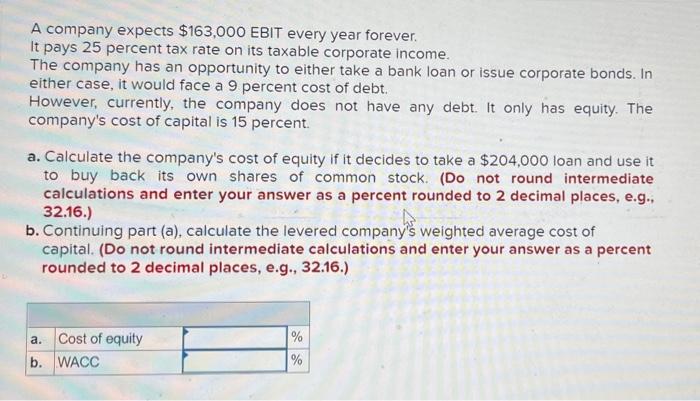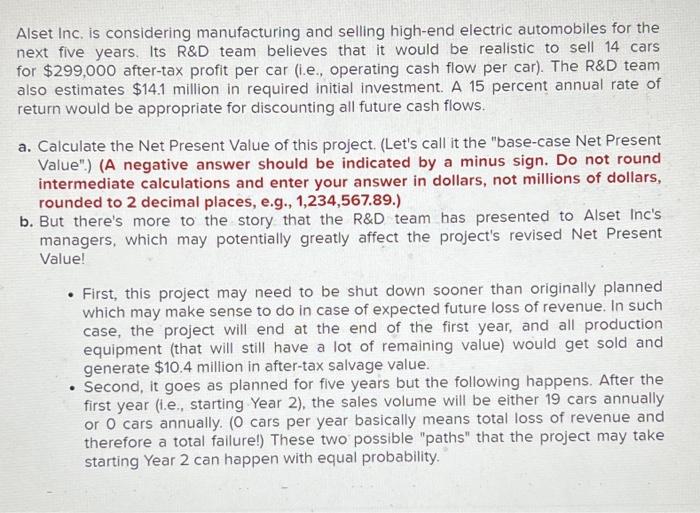A company expects $163,000 EBIT every year forever. It pays 25 percent tax rate on its taxable corporate income. The company has an opportunity to either take a bank loan or issue corporate bonds. In either case, it would face a 9 percent cost of debt. However, currently, the company does not have any debt. It only has equity. The company's cost of capital is 15 percent. a. Calculate the company's cost of equity if it decides to take a $ 204,000 loan and use it to buy back its own shares of common stock. (Do not round intermediate calculations and enter your answer as a percent rounded to 2 decimal places, e.g., 32.16.) b. Continuing part (a), calculate the levered company's weighted average cost of capital. (Do not round intermediate calculations and enter your answer as a percent rounded to 2 decimal places, e.g., 32.16.) a. Cost of equity b. WACC % % Alset Inc. is considering manufacturing and selling high-end electric automobiles for the next five years. Its R&D team believes that it would be realistic to sell 14 cars for $299,000 after-tax profit per car (i.e., operating cash flow per car). The R&D team also estimates $14.1 million in required initial investment. A 15 percent annual rate of return would be appropriate for discounting all future cash flows. a. Calculate the Net Present Value of this project. (Let's call it the "base-case Net Present Value") (A negative answer should be indicated by a minus sign. Do not round intermediate calculations and enter your answer in dollars, not millions of dollars, rounded to 2 decimal places, e.g., 1,234,567.89.) b. But there's more to the story that the R&D team has presented to Alset Inc's managers, which may potentially greatly affect the project's revised Net Present Value! First, this project may need to be shut down sooner than originally planned which may make sense to do in case of expected future loss of revenue. In such case, the project will end at the end of the first year, and all production equipment (that will still have a lot of remaining value) would get sold and generate $10.4 million in after-tax salvage value. Second, it goes as planned for five years but the following happens. After the first year (1.e., starting Year 2), the sales volume will be either 19 cars annually or O cars annually. (O cars per year basically means total loss of revenue and therefore a total failure!) These two possible "paths" that the project may take starting Year 2 can happen with equal probability. Calculate the revised Net Present Value. In other words, calculate the project's expected Net Present Value with the embedded option of shutting everything down at the end of Year 1 as explained above. (Do not round your intermediate calculations. Enter your final answer in dollars, not millions of dollars, and round to 2 decimal places, e.g., 1,234,567.89.) a. Base-case NPV b. Revised NPV









